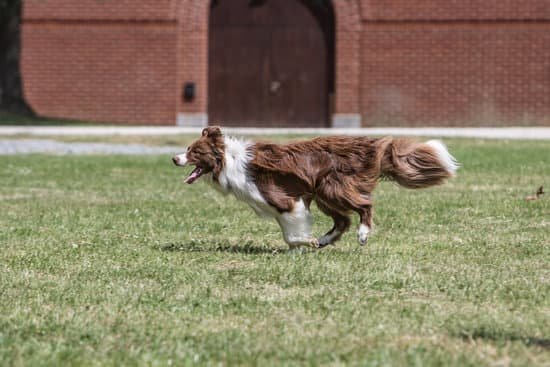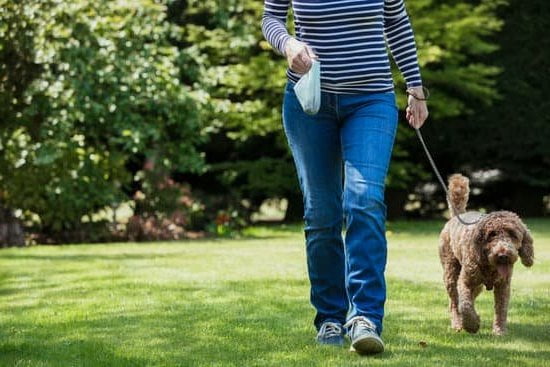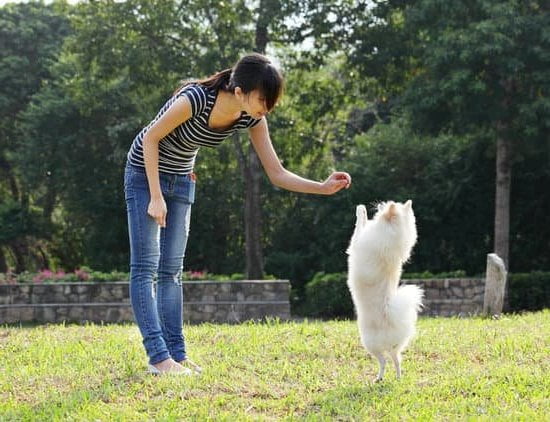At home dog training offers numerous benefits for both the dog and its owner. By training your furry companion at home, you can establish a strong bond, provide personalized attention, and create a comfortable environment for effective learning. This article will provide valuable insights into the world of at home dog training, offering expert tips and practical techniques to help you guide your canine friend towards good behavior and obedience.
In this section, we will explore why at home dog training can be advantageous for both dogs and their owners. From creating a stress-free training environment to establishing a strong foundation based on trust and leadership, at home dog training offers a unique opportunity to tailor your approach to your pet’s individual needs. Whether you’re dealing with a new puppy or an older dog in need of behavioral guidance, the benefits of at home training are undeniable.
Throughout the course of this article, we will delve into various aspects of at home dog training, including creating the perfect environment for learning, essential training tools, hands-on techniques for practical training sessions, troubleshooting common challenges, establishing consistency in your routine, and real-life success stories that inspire and motivate.
By understanding the benefits of at home dog training, you can set yourself and your furry friend up for success in developing a strong and healthy relationship based on mutual respect and understanding.
Setting the Stage
The key to successful at home dog training begins with creating an environment that is conducive to learning and positive reinforcement. Creating the perfect setting for at home dog training involves a combination of physical and psychological elements that can help set the stage for effective training sessions.
First and foremost, it’s important to choose a quiet and relatively distraction-free area within your home where you can focus on training your dog. This could be a specific room or corner of a room where you can easily control the environment. Removing any potential distractions such as toys, food, or loud noises will help keep your dog’s attention on the training at hand.
In addition to the physical environment, it’s also crucial to establish a positive and encouraging atmosphere for at home dog training. This means approaching each session with patience, positivity, and consistency. Dogs thrive in environments where they feel safe and secure, so creating a space that fosters trust and confidence is essential in achieving successful outcomes in at home dog training.
Finally, incorporating elements of fun and play into your training sessions can make the experience enjoyable for both you and your dog. Using toys or treats as rewards can help motivate your dog and reinforce positive behaviors during training. By setting the stage for at home dog training in this way, you are laying the groundwork for a successful and fulfilling experience for both you and your canine companion.
| Elements | Description |
|---|---|
| Quiet Environment | Choose a distraction-free area within your home. |
| Positive Atmosphere | Approach each session with patience, positivity, consistency. |
| Fun and Play | Incorporate toys or treats as rewards to motivate your dog during training. |
The Basics
When it comes to at home dog training, one of the fundamental principles is establishing yourself as the leader in your relationship with your dog. Dogs are pack animals by nature, and they look to their human owners for guidance and direction. By assuming the role of the leader, you can effectively communicate with your dog and establish a strong foundation for obedience and training.
To establish leadership with your dog, it’s essential to set clear boundaries and rules from the beginning. This includes setting up a designated feeding schedule, creating a consistent walking routine, and enforcing basic obedience commands such as sit, stay, and come. Consistency is key in reinforcing these boundaries and commands, as it helps your dog understand what is expected of them.
Building trust with your dog is another crucial aspect of at home dog training. Trust forms the basis of a strong bond between you and your pet, and it allows for effective communication during training sessions. Spending quality time with your dog, engaging in interactive play, and providing positive reinforcement are all ways to build trust.
Additionally, using calm and assertive energy when interacting with your dog can help them feel secure and confident in your leadership. These foundational principles are essential for successful at home dog training that strengthens the bond between you and your furry companion.
In summary, establishing leadership and building trust with your dog are pivotal components of at home dog training. By setting clear boundaries, being consistent in enforcing rules, and building a trusting relationship through positive reinforcement, you can lay down a solid groundwork for successful training sessions with your beloved pet.
Training Tools
When it comes to at home dog training, having the right tools and resources at your disposal can make a significant difference in the success of your efforts. Whether you’re working on basic obedience, behavioral modification, or specialized training, having the proper equipment can help ensure that your training sessions are effective and productive. Below are some essential training tools and resources that every dog owner should have for at home dog training:
- Leash and Collar: A sturdy leash and well-fitting collar are fundamental tools for any at home dog training program. They provide control and guidance during walks, obedience exercises, and behavior correction.
- Treats: High-value treats are a valuable tool for positive reinforcement during training sessions. Treats can be used to reward good behavior, motivate your dog, and reinforce commands.
- Clicker: A clicker is a simple but effective tool for marking desired behaviors and communicating with your dog during training. It helps to create clear communication between you and your pet.
- Toys: Interactive toys such as balls, tugs, or puzzle toys can be used as rewards or motivation during at home dog training. They can also provide mental stimulation and help prevent boredom.
- Training Mat or Bed: Having a designated spot for your dog to settle on during training sessions can help establish boundaries and create a calm environment for learning.
In addition to physical tools, there are also valuable resources that can support at home dog training. Online tutorials, books, videos, and professional trainers can provide invaluable guidance and information for implementing effective training techniques.
Remember that while these tools are important, the most critical resource for successful at home dog training is your time, patience, consistency, and dedication as a pet owner.
Hands-on Techniques
Positive Reinforcement Training
One of the most effective methods for at home dog training is positive reinforcement. This involves rewarding your dog with treats, praise, or toys when they exhibit the desired behavior. By focusing on positive reinforcement, you can create a strong bond with your dog and encourage them to repeat good behaviors. For example, when teaching your dog to sit, you can use treats to reward them when they follow the command.
Clicker Training
Another hands-on technique that can be used for at home dog training is clicker training. This method involves using a small clicker device that makes a distinct sound to mark the precise moment when your dog does something correctly. By pairing the sound of the clicker with a treat or praise, you can effectively communicate to your dog that their actions are being rewarded. Clicker training can be particularly useful for teaching complex tricks and behaviors.
Leash Training
Leash training is an essential part of at home dog training, especially for younger dogs or puppies. It’s important to teach your dog how to walk on a leash without pulling or tugging. One technique for leash training is to stop walking as soon as your dog starts pulling on the leash and only continue moving forward once they have calmed down and are walking beside you. Consistency in this practice will help establish good leash manners during walks.
By incorporating these hands-on techniques into your at home dog training routine, you can effectively teach your pet important behaviors and commands while strengthening your bond with them. Remember to stay patient and consistent in your approach, as every dog learns at their own pace. With the right methods and dedication, successful at home dog training is definitely achievable.
Troubleshooting
Dealing With Distractions
One common challenge in at home dog training is dealing with distractions. Whether it’s the doorbell ringing, other pets in the house, or outdoor noises, distractions can make it difficult for your dog to focus during training sessions.
To address this challenge, it’s important to gradually introduce distractions during training and use positive reinforcement to redirect your dog’s attention back to the task at hand. Additionally, finding a quiet and controlled environment for training can help minimize distractions.
Behavior Issues
Another common obstacle in at home dog training is addressing behavior issues such as aggression, separation anxiety, or excessive barking. When facing behavior challenges, it’s essential to understand the underlying cause and develop a targeted training plan to modify your dog’s behavior. Seeking advice from a professional trainer or behaviorist may also be beneficial in addressing more complex behavior issues.
Consistency and Patience
Consistency and patience are key elements in successful at home dog training. It’s important for dog owners to remain consistent in their training methods, routines, and expectations for their dogs. Training takes time and patience, so it’s crucial not to get discouraged if progress seems slow. Consistently reinforcing desired behaviors and using positive reinforcement will ultimately lead to success in at home dog training.
Consistency Is Key
One important aspect of establishing a routine for successful at home dog training is setting specific times for training sessions. Whether it’s in the morning before breakfast or in the evening before dinner, having designated times for training will help your dog know when to expect it and be more receptive to learning. Consistency in the timing of training sessions will also help reinforce good behavior throughout the day.
In addition to setting specific times for training, consistency in the use of commands and cues is also crucial for successful at home dog training. Using the same verbal cues and hand signals every time will help your dog associate them with particular behaviors, making it easier for them to understand what you’re asking of them.
It’s also important for all family members involved in the training process to use consistent commands and cues to avoid confusion for your dog.
| Training Schedule | Consistent Commands |
|---|---|
| Morning: 9:00 am | Sit |
| Evening: 6:00 pm | Stay |
Real-Life Success Stories
Many dog owners have found great success in training their furry companions in the comfort of their own homes. One such inspiring example is the story of Emma and her Labrador, Max. Emma struggled with finding time to take Max to a traditional obedience class due to her hectic work schedule.
Instead, she dedicated time each day to implement at home dog training techniques and saw remarkable progress in Max’s behavior. With consistency and patience, Emma was able to successfully train Max to follow commands, walk on a leash without pulling, and even overcome his fear of car rides.
Another heartwarming success story comes from John and his rescue dog, Bella. Bella had severe separation anxiety when John first adopted her, making it difficult for him to leave her alone or even go on walks without her becoming anxious. Through at home dog training methods such as desensitization exercises and positive reinforcement, John was able to help Bella overcome her anxiety and become a more confident and independent companion.
Furthermore, the story of Sarah and her energetic border collie, Lucy, showcases the power of implementing hands-on techniques in at home dog training. Sarah dedicated time to engage Lucy in mentally stimulating activities such as puzzle toys, agility courses, and basic obedience exercises right in their backyard. By providing Lucy with physical exercise and mental stimulation regularly at home, Sarah was able to harness Lucy’s energy into productive behaviors and strengthen their bond as pet and owner.
These real-life success stories serve as a reminder that with dedication, patience, and the right approach to at home dog training techniques, any dog owner can achieve incredible results in shaping their beloved pets into well-behaved companions.
Conclusion
In conclusion, at home dog training offers numerous benefits for both dogs and their owners. By training your dog at home, you can create a comfortable and familiar environment for learning, which can help reduce stress and anxiety in your pet. Additionally, at home dog training allows you to establish a strong bond with your dog while teaching them important skills for a happy and well-behaved life.
With the right approach, tools, and techniques, at home dog training can be highly effective. It is crucial to set the stage by creating a positive environment for learning, as well as establishing yourself as a confident and trustworthy leader for your dog. Utilizing essential training tools and resources can further enhance the success of at home dog training, helping you to achieve positive results.
Overall, consistency is key when it comes to successful at home dog training. By establishing a routine and addressing common challenges that may arise during the training process, you can empower yourself as a dog owner to effectively train your furry companion at home.
With dedication and patience, real-life success stories are proof that at home dog training is not only possible but can lead to incredibly rewarding outcomes. So go ahead, take the first step in at home dog training and embark on an enriching journey with your beloved pet.
Frequently Asked Questions
How Can I Train My Dog by Myself?
You can train your dog by yourself through consistency, positive reinforcement, and patience. Start with basic commands like sit, stay, and come, and gradually move on to more advanced training.
Can a Dog Be Trained at Home?
Yes, a dog can definitely be trained at home. In fact, many successful dog owners have trained their pets without professional help. As long as you are committed and consistent, you can effectively train your dog in the comfort of your own home.
Can I Send My Dog to Be House Trained?
Yes, you can send your dog to be house trained by professional trainers or facilities that offer this service. They will work on teaching your dog proper indoor behavior such as potty training and not chewing on furniture. This option can be particularly helpful for busy pet owners who may not have the time to dedicate to training themselves.

Welcome to the blog! I am a professional dog trainer and have been working with dogs for many years. In this blog, I will be discussing various topics related to dog training, including tips, tricks, and advice. I hope you find this information helpful and informative. Thanks for reading!





